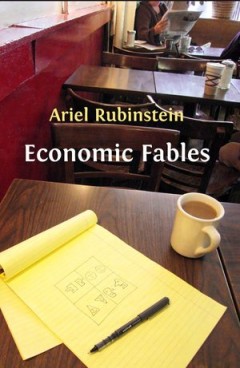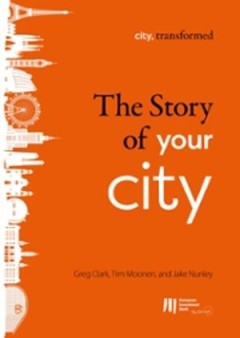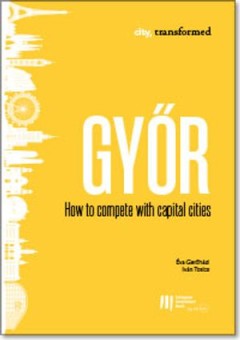Filter by

Economic Fables
Part memoir, part crash-course in economic theory, this deeply engaging book by one of the world's foremost economists looks at economic ideas through a personal lens. Together with an introduction to some of the central concepts in modern economic thought, Ariel Rubinstein offers some powerful and entertaining reflections on his childhood, family and career. In doing so, he challenges many of …
- Edition
- -
- ISBN/ISSN
- 9781906924799
- Collation
- -
- Series Title
- -
- Call Number
- 650

The virtuous circle
Imagine an economy in which today’s goods become tomorrow’s resources and nothing is discarded. Ellen MacArthur, the founder of her eponymous foundation, which works to accelerate the transition to a regenerative economy, writes that we need to stop living a “take, make, dispose” lifestyle. We need to think about a circular economy where waste and pollution are prevented, products are r…
- Edition
- -
- ISBN/ISSN
- 9789286143038
- Collation
- -
- Series Title
- -
- Call Number
- 650

Togetherness : A new heritage deal for Europe
Europe’s cultural heritage is a vast, multifaceted mosaic showing who we were, who we are and who we aspire to be. We are all responsible for this huge, precious and fragile legacy. The coronavirus pandemic revealed that unexpected events can suddenly change our way of life. In the future, other threats could well pose further challenges to our safety, health and environment as well as our so…
- Edition
- -
- ISBN/ISSN
- 9789286148491
- Collation
- -
- Series Title
- -
- Call Number
- 650

Three foundations : A competitive, sustainable, inclusive Europe
Europe faces a historic opportunity. We need to reimagine European unity as a collective endeavour, as the only way in which we can turn threats to our way of life into the possibility to create a better life for all. This report focuses on three core areas where EU-wide political ambition and investment are truly necessary: Rapid technological change amid increasing global competition, with di…
- Edition
- -
- ISBN/ISSN
- 9789286143755
- Collation
- -
- Series Title
- -
- Call Number
- 650

The story of your city
By the end of this century, 9 out of 10 Europeans will live in an urban area. But what kind of city will they call home? You'll find all the answers in CITY, TRANSFORMED, the new essay series from the European Investment Bank. This panoramic first essay in the series lays out a great sweeping history of European cities over the last fifty years—and showcases new directions being taken by some…
- Edition
- -
- ISBN/ISSN
- 9789286138669
- Collation
- -
- Series Title
- -
- Call Number
- 650

Stockholm : The Tale of the Unicorn Factory
Once upon a time there was a city in a cold place a long way to the north. One day the city started to tell a story about itself. As the chapters unfolded, life in the city changed, and soon it didn’t even seem so cold or far away any more. People listened to the story and realised that the city wasn’t quite what they expected. They started to tell the story to each other about how the city…
- Edition
- -
- ISBN/ISSN
- 9789286139116
- Collation
- -
- Series Title
- -
- Call Number
- 650

The state of local infrastructure investment in Europe
Europe’s COVID-19 recovery strategy calls for large-scale public investment to “building back better.” Municipalities account for 45% of all public investment – which makes them a key partner in recovery efforts. As poles of social and economic activities, municipalities will also be critical to addressing climate change and to improving digitalisation. Our municipality report analysis …
- Edition
- -
- ISBN/ISSN
- 9789286149542
- Collation
- -
- Series Title
- -
- Call Number
- 650

Smart Europe
A green digital economy could change the future of the Old Continent. The new Smart Europe will be based on three elements: new communication technologies, new sources of energy and new modes of mobility. But the transition will require a transformation of the continental infrastructure. Digitalisation, the Internet and renewables will play a major role in the so-called Third and Fourth Industr…
- Edition
- -
- ISBN/ISSN
- 9789286142772
- Collation
- -
- Series Title
- -
- Call Number
- 650

Rural connectivity toolkit : Improving digital coverage with innovative finan…
Africa’s digital transformation is generating big changes and benefits for many parts of the economy and society. But hundreds of millions of people still have no internet connections. For those who have internet access, prices can be high and bandwidth is often severely limited. Many African countries lack the technical capabilities and financing to plan big telecom projects that can fill th…
- Edition
- -
- ISBN/ISSN
- 9789286150227
- Collation
- -
- Series Title
- -
- Call Number
- 650

Gyor : How To Compete With Capital Cities
Located between three European capital cities, Győr has to work hard to attract investment and jobs. The Hungarian city has set itself up to attract innovative companies, creating new urban values such as education-based innovation, a high-quality urban environment and a lively cultural sphere. Here's how a “secondary city” builds on its industrial past even as it breaks away from its depe…
- Edition
- -
- ISBN/ISSN
- 9789286138874
- Collation
- -
- Series Title
- -
- Call Number
- 650
 Computer Science, Information & General Works
Computer Science, Information & General Works  Philosophy & Psychology
Philosophy & Psychology  Religion
Religion  Social Sciences
Social Sciences  Language
Language  Pure Science
Pure Science  Applied Sciences
Applied Sciences  Art & Recreation
Art & Recreation  Literature
Literature  History & Geography
History & Geography